Naming creatures before their extinction
On the Urgency of Being a Naturalist.
A Workshop on Wild Bees
Following Genesis 2:20, “Man gave names to all the livestock, the birds in the sky and all the wild animals.” And one should add that this task of naming creatures was not only Adam’s function but is the role of all naturalists until nowadays: the naming of creatures is still under process and entomologists for instance are regularly inventing new names for the species of insects they discover.
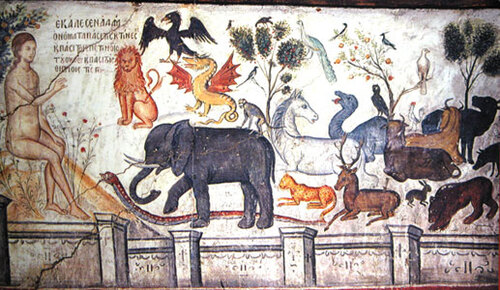
Theophanis Strelitzas, “Adam naming animals,” Aghios Nikolaos Anapafsas monastery © Wikipedia commons
The present ecological crisis makes this task more crucial than ever: we must name species before their extinction. Among numerous others, an article published in Biological Conservation in 2019 “reveals dramatic rates of decline that may lead to the extinction of 40% of the world’s insect species over the next few decades.”[1] Knowing that our knowledge of the entomological fauna is still far from complete, many species could disappear even before humans give them a name, before anyone even know their bare existence, before we achieve our Adamic duty. Practically, nobody can care of the extinction of species, if he does not even know the existence of such species. Therefore, there is no ecological hope without the operation of naming. So, naming is a salvation issue. And this echoes an old soteriological topic: the naming function of the naturalist is like that of the priest of the Middle Ages who baptized children the earliest as possible, due to their high probability of early death. They applied the following principle: no human being should die before having a Christian name, without being accepted as a member of the Church, or he will be lost in the limbo for the eternity of time. Baptizing children was more than a question of life and death, it was a question of access to dignity and afterlife. We should say the same concerning the endangered biodiversity: no species should extinguish before being – at least – named, without being acknowledged in its passage on Earth. The mark of respect toward the diverse forms of life should be to name the forms, as the minimum proof that we paid attention to their existence.
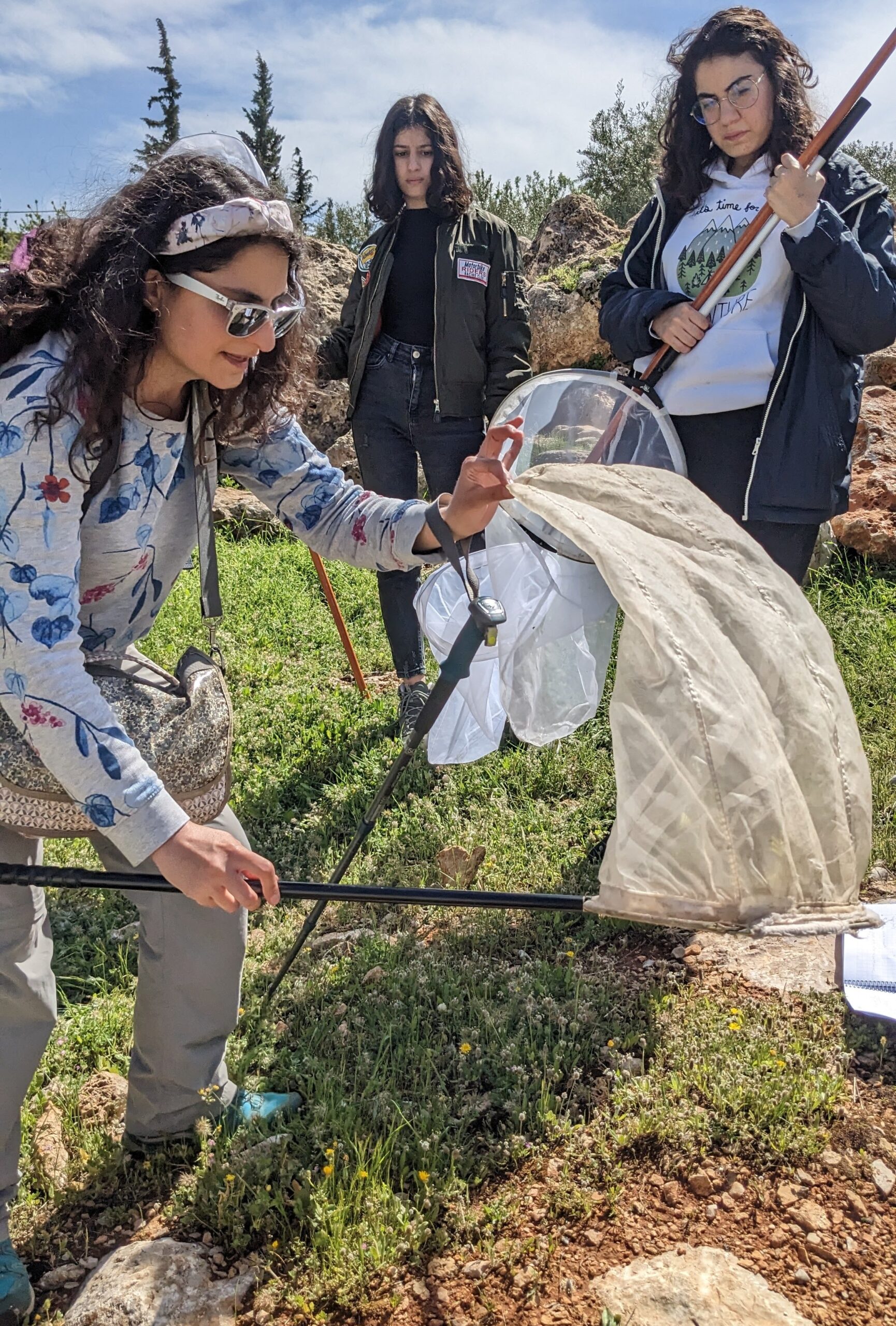
Mira Boustani hunting a bee © Monica Illitova
At A Rocha Lebanon, we had the chance to welcome one of these naturalists who endorse their Adamic duty with a high conscious of the tragic momentum of the ecological crisis. Mira Boustani already named three new species of Lebanese wild bees, and she is fully aware of the urgency of her task, since she works at Mons University (Belgium) on the Red list of endangered bee species of Europe. On April 15 at ARL’s office in Aana, she conducted a workshop on bees of Lebanon, giving an overview over these pollinating insects that people often reduce to the honeybee (Apis mellifera). Having mobilized during her PhD thesis some fourteen researchers for the first census of wild bees of North Lebanon, she also spent one week at A Rocha with a British colleague for collecting specimens in the Bekaa valley. During the workshop, she presented the diversity of the Lebanese entomological fauna, which encompasses 573 species of bees, 284 of them having been recently identified. And the discovery should reveal an even huger diversity. Indeed, the mountainous identity of the country and the mixing between Mediterranean and mountain climates implies that Lebanon’s vegetation has a very high species-area ratio of 0.25 species/km2.[2] To understand this diversity, one can compare the Lebanon surface, which covers only 0.007% of the world’s land surface area, and its diversity: Lebanon hosts about 0.8% of the world’s recorded and catalogued species.[3] The importance of herbs and flowers implies a high diversity of insects, among them bees.
Mira Boustani’s mission is to raise awareness on this key family of insect which plays a fundamental role in pollination, insects being a mandatory agent for the fertilization of almost 90% of the flowers, among them many of the fruits and vegetables we depend on for our food. The workshop gathered members of NGOs, students in environmental studies, scholars in ecological sciences, the staff of A Rocha Lebanon and local beekeepers. The discussion with the latter is important, because of the strong competition on resources that the introduction of honeybees develop with wild bees, especially when we know that wild bees are usually solitary bees, while a beehive can contain some 30,000 bees: an apiary of 50 beehives results in the introduction of some 1.5 million of bees in a habitat!
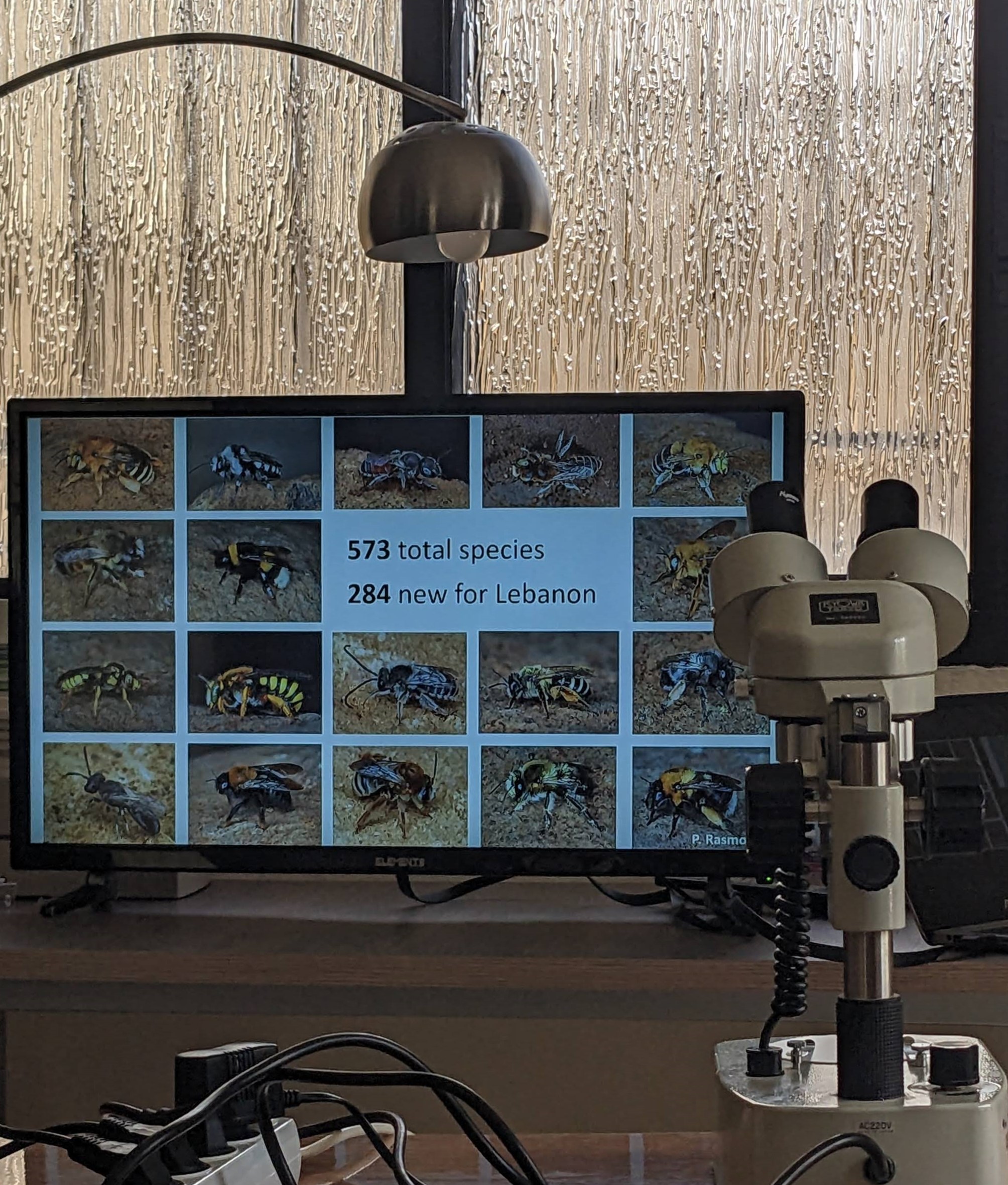
© Monica Illitova
The workshop was not only theoretical, but its date was chosen to correspond with the period of blast of the blossoming in the Bekaa valley and the momentum of high foraging activity. Weaponned with nests, the participants had a hands-on lesson in the orchards of Aana village, where they could study the effective diversity of pollinating insects, and especially bees. Having collected nice specimens, the participants could come back to the office made laboratory, study under the binoculars the precise physiognomy of the collected specimens and try to identify them.
Mira Boustani educated A Rocha’s staff to procedures for specimen collection and conservation, in order to develop a long-term survey on the site of Mekse and in hope that we can help to add knowledge on the incredible diversity of bees of Lebanon.
[1] Francisco Sánchez-Bayo, Kris A.G. Wyckhuys, “Worldwide decline of the entomofauna: A review of its drivers,” Biological Conservation, Volume 232 (2019), 8-27, p. 8.
[2] The Lebanese National Biodiversity Strategy and Action Plan, p. 2.
[3] The Lebanese National Biodiversity Strategy and Action Plan, p. ix.
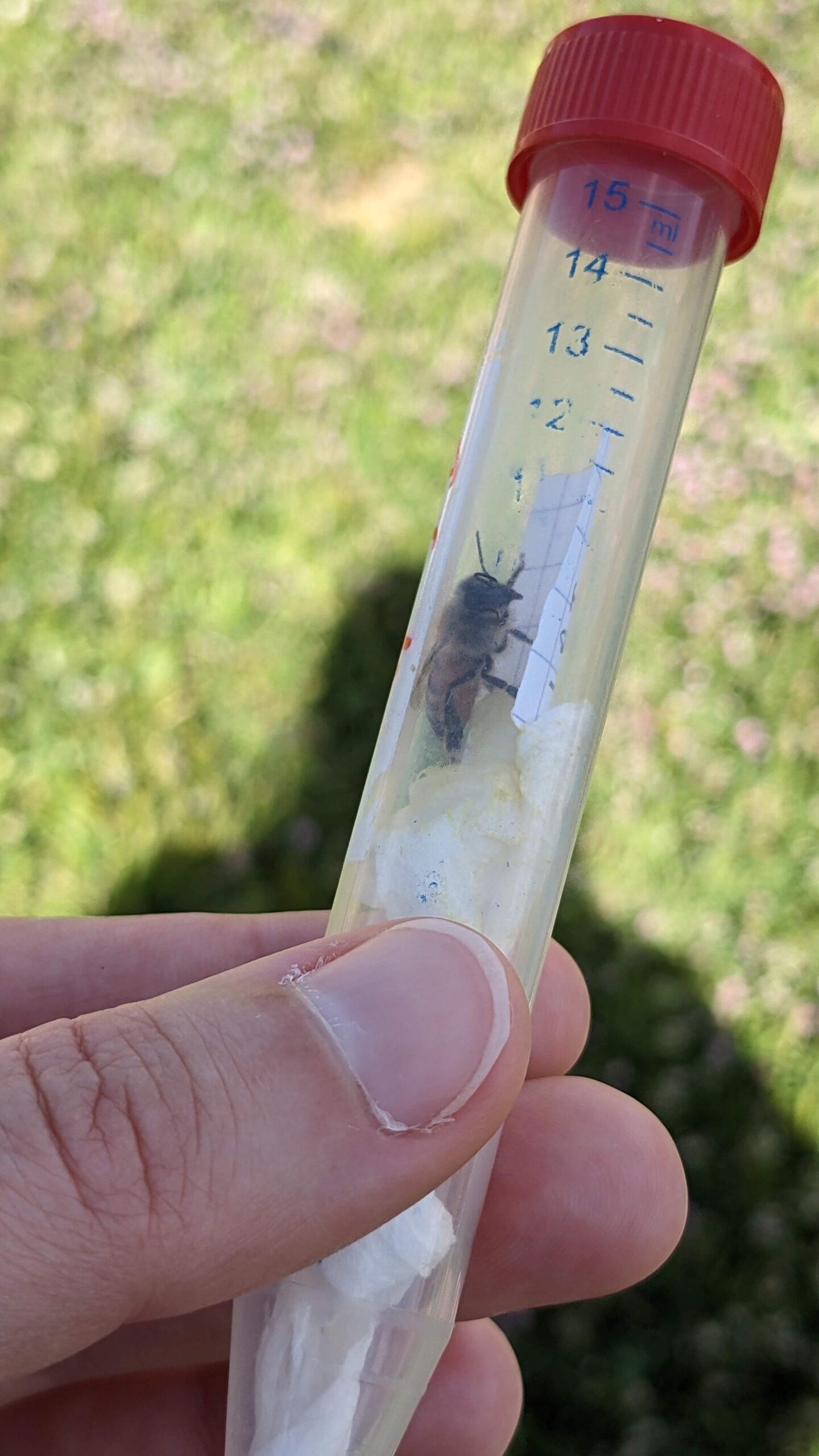
© Monica Illitova
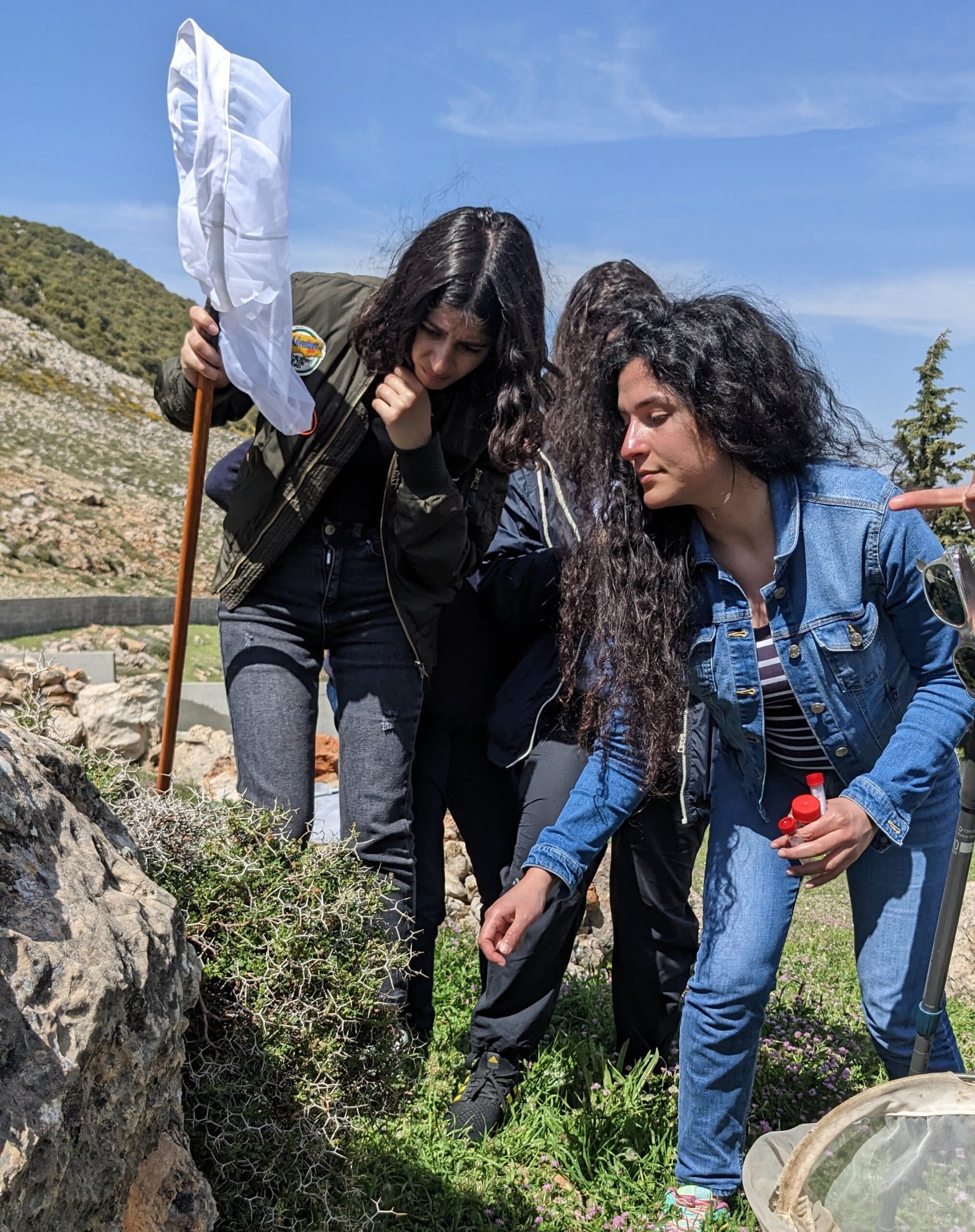
© Monica Illitova